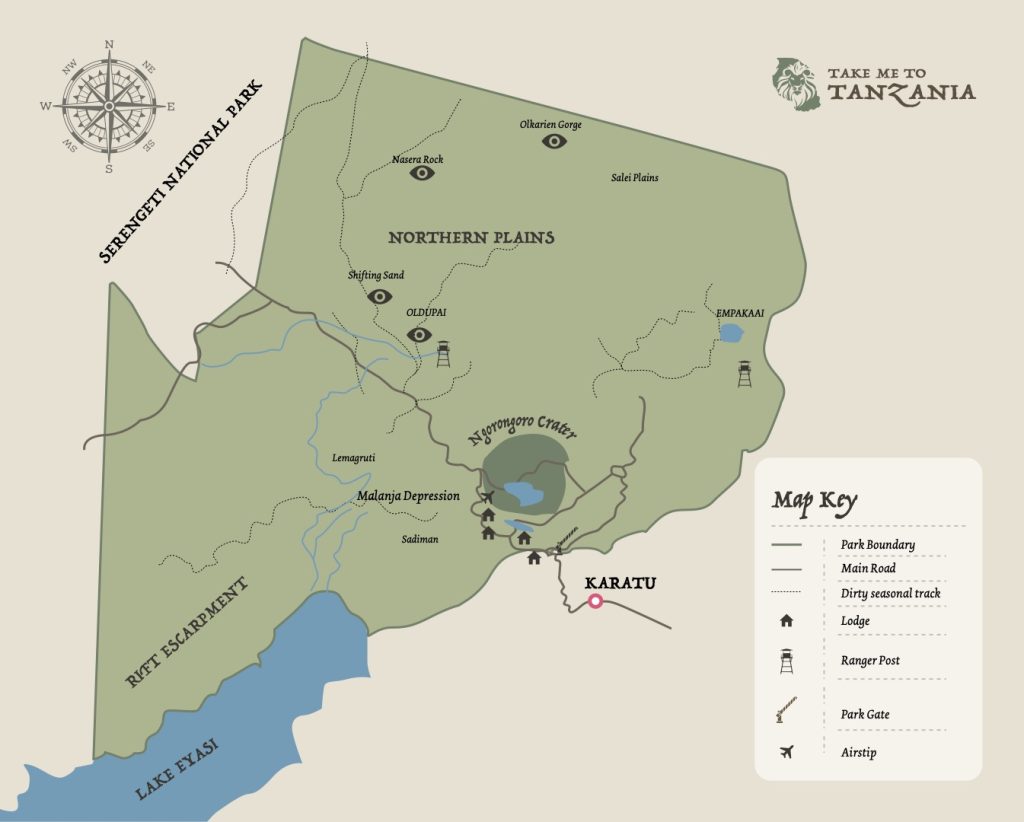
The Ngorongoro Conservation Area is one of Africa’s most iconic travel destinations—a UNESCO World Heritage Site and International Biosphere Reserve that covers over 8,300 km² in northern Tanzania. Stretching from 1,020 to 3,577 meters above sea level, the area combines breathtaking landscapes, rich wildlife, ancient human history, and the traditional lifestyle of the Maasai people.
Often referred to as the “Eighth Wonder of the World,” Ngorongoro is home to grasslands, volcanoes, waterfalls, and dense forests. It offers an unmatched blend of natural beauty and cultural heritage that continues to captivate visitors from around the globe.
Ngorongoro can be visited year-round, but the dry season (June to October) is ideal for game viewing, as wildlife is easier to spot around water sources. The green season (November to May) brings lush scenery, fewer crowds, and spectacular birdwatching, especially for migratory species. The caldera’s altitude means temperatures are generally mild, though evenings can be chilly.
NCAA is accessible primarily by road, with air and rail connections nearby.
By Road
Ngorongoro is located just 177 km west of Arusha, Tanzania’s safari capital. The road is paved up to Lodoare Gate (150 km), with the final stretch on a dirt road. Total driving time is approximately 3 hours.
By Air
Private charter flights to Lake Manyara Airstrip or nearby airstrips like Ndutu can be arranged from Arusha, with transfer times to the park ranging from 30 minutes to 1 hour.
Self-Drive & Tours
Most visitors arrive with pre-arranged safari tour packages or through local tour operators who provide 4x4 vehicles, guides, and accommodation options inside or near the conservation area.

